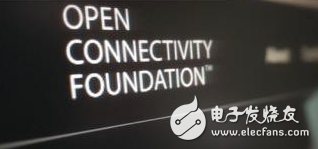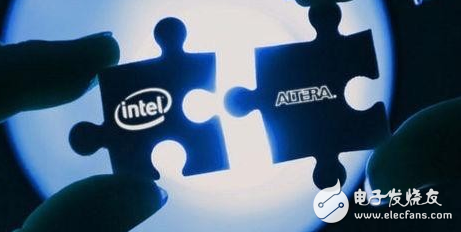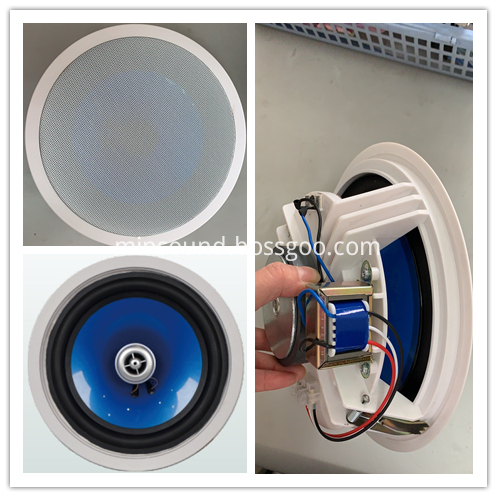Intel announced that it will lay off 12,000 people worldwide, which should be Intel's largest layoff in recent years. According to Intel's fiscal first quarter financial report, Intel's first quarter revenue was $13.7 billion, up 7% over the same period, down 8% from the previous quarter's $14.9 billion.
In the era of the Internet of Everything, with the integration of technologies such as the Internet of Things, big data and cloud computing into all aspects of our lives, can Intel seize the opportunity of the Internet of Things era? Yang Jianyong, an Internet industry veteran, said that Intel's business strategy has tilted toward the Internet of Things. According to Intel's latest quarterly report, revenue from the Internet of Things sector in the first quarter was $651 million, and it has clearly achieved good results in the Internet of Things.
Intel has long proposed a transformation towards the Internet of Everything, and Intel is also actively promoting the formation of the entire Internet of Things standards. In 2014, Intel and Samsung, Cisco and MediaTek and other industry players launched the OIC Alliance, the Open Internet Alliance, with the aim of In order to solve the problem of interconnection between devices. Intel also formed the IIC Alliance (Industrial Internet Alliance) with companies such as GE, IBM, Cisco and AT&T to develop a common blueprint that allows devices to share and transfer data between vendors.

In February of this year, Intel joined forces with companies including Microsoft, Qualcomm, Samsung, Cisco, General Electric, and Electrolux to support the development of the Internet of Things industry and launched a new Internet of Things standards organization "Open." ConnecTIvity FoundaTIon ("OCF").
In the IoT ecosystem, Intel hopes to build a complete ecosystem with a strong ecosystem to help them meet the opportunities in the Internet of Things, while releasing a series of new chips aimed at IoT devices. .
At the same time, in order to strengthen its position in the Internet of Things, in June 2015, Intel announced the acquisition of programmable chip maker Altera Corporation for $16.7 billion, which is the largest acquisition in Intel history.

PCWorld has analyzed why Intel has made huge investments in FPGA manufacturers. The analysis points out that Intel is considering new technology applications other than CPUs, and FPGAs can be integrated into processor products as GPU-like acceleration technologies. It is also widely used in the chip technology of the Internet of Things. In the future, smart cities and factory automation systems will inevitably use FPGAs, especially the core technologies such as communication base stations supporting the Internet of Things, and FPGAs are indispensable.
Some analysts also pointed out that the acquisition of Altera to enhance the Intel data center chip product line, and enhance the business of automotive chips, smart watch chips and device chips in the Internet of Things, will help strengthen Intel's position in the field of Internet of Things.
Intel has proposed three major ideas for the future world: perceptualization, all interconnections, and extension of computing. In my understanding of perceptualization, it is becoming the forefront of computing innovation, and the original cold equipment can capture our instructions to make corresponding judgments without any button triggering. To give ice-cold device awareness, the first and foremost condition is that all devices are interconnected and communicated. As of 2015, there are reports that connected devices reached 15 billion. It is estimated that by 2020, connected devices will reach 200 billion. Finally, computing is everywhere, from smart homes, smart wearables, smart sports devices and even car intelligence that require independent thinking and analysis to create a smarter user experience.
Intel's investment in the group Intel Capital invested more than 500 million US dollars in the technology industry last year. Intel invested in the construction of the Internet of Things, if the Internet of Things is going well, then wearable smart products with Intel chips, smart home and Connected cars, etc. will be able to communicate with servers in the data center through network devices configured with Intel processors.
The author is the founder of the Internet of Things, Yang Jianyong (the Internet of Things authority, technology celebrity), dedicated to the dissemination of IoT-related information, long-term focus on the Internet of Things, smart home, wearable smart devices and artificial intelligence and other cutting-edge technology fields.
Hot selling Minsound series ceiling speakers produce clear and loud sound of high-fidelity in a wide coverage.
We have different models of ceiling speakers with different power ,speaker unit and size,
It is ideal choice for home theatre, meeting room, shopping mall, lecture room,classroom and so on.
Ceiling Speaker,Ceiling Loudspeaker,in Ceiling Speaker,in Ceiling Speakers,Ceiling Mount Speakers
Taixing Minsheng Electronic Co.,Ltd. , https://www.msloudspeaker.com